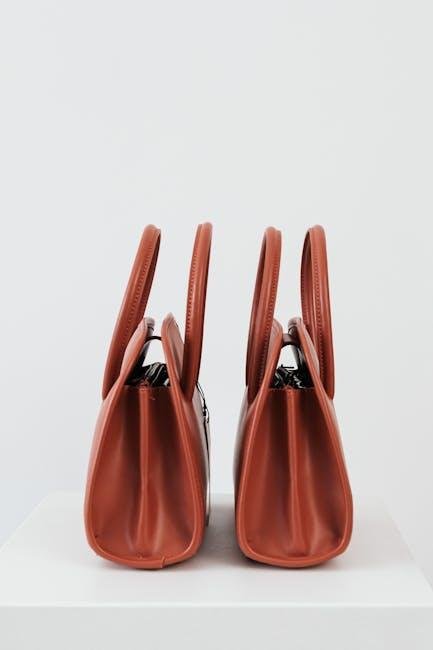In a world overflowing with choices, where brand loyalty often feels like a lost art, we embarked on an intriguing experiment: what would happen if we confined ourselves to just one brand for an entire month? Gone were the days of endless scrolling through product options or comparing labels in the aisles. Rather, we sought to immerse ourselves fully in the experience that a single brand offers—its values, promises, and perhaps its limitations. From the kitchen to the closet, we unwrapped our findings, discovering not only the nuances of habitual consumption but also the surprising relationships formed within the confines of brand loyalty. Join us as we unravel the tapestry of our month-long journey, exploring how this singular brand shaped our choices, perceptions, and daily lives.
Exploring brand Loyalty Through a month-Long Experiment
Over the course of thirty days, we delved into an experiment that challenged our perceptions of brand loyalty. The selected brand, Brand X, became our exclusive choice for essential products—from morning coffee to skincare. As days progressed, our initial enthusiasm encountered the realities of consistency. Specifically,we noted how brand attributes shaped our experiences. Brand X delivered quality and reliability, winning our trust, yet its premium pricing sometimes led us to question the value for money. This duality of satisfaction and doubt underscored the complexity of brand loyalty; it is not merely about preference but also about how a brand meets our expectations over time.
to analyze our journey, we charted our emotional responses and practical experiences in a simple table:
| Week | Emotional Response | Challenges Faced |
|---|---|---|
| 1 | Excited | Price Sensitivity |
| 2 | Content | Limited Variety |
| 3 | Frustrated | Quality fluctuations |
| 4 | Ambivalent | Loyalty Dilemma |
This table encapsulates the emotional evolution throughout the month and the challenges we faced, emphasizing that loyalty is not just about habit but also about a dynamic relationship with the brand.While we appreciated the familiarity of Brand X, it propelled us to think critically about our choices, suggesting that true brand loyalty thrives not solely on affection but also on ongoing engagement and satisfaction.

Evaluating Product Quality and Consistency in Everyday Use
Over the course of 30 days, utilizing a single brand for our daily needs allowed us to rigorously assess both product quality and consistency. with each item, we observed how well it held up to the demands of everyday use, from household essentials to personal care. Notably, we found that durability and performance varied greatly among products. As a notable example, items such as cleaning supplies consistently delivered superior results, while others, like kitchen gadgets, sometimes fell short of expectations.
In terms of user experience, we compiled feedback on key attributes that influenced our satisfaction. Here’s a snapshot of the findings:
| Product Type | Quality Rating | Consistency Rating |
|---|---|---|
| Cleaning Supplies | 9/10 | 10/10 |
| Personal Care Items | 7/10 | 8/10 |
| Kitchen Gadgets | 6/10 | 6/10 |
Through this exercise,we identified several traits that truly mattered in evaluating an overarching brand’s quality:
- Reliability: Consistent performance across different use cases.
- Value for Money: Pricing relative to quality and effectiveness.
- User Satisfaction: overall happiness with product experience.

Unpacking the Financial Impact of a single-brand Experience
delving into a single-brand experience over a month unveiled fascinating insights into financial dynamics. At first glance, the convenience and consistency of sticking to one brand seemed to simplify budgeting. we discovered that the absence of price comparisons made it easier to anticipate expenses, leading to a more straightforward financial planning process. However, as the days progressed, the limitations of brand loyalty began to emerge, revealing a tendency to overlook more cost-effective alternatives. This situation prompted us to assess not only the immediate expenses but also the possibility costs tied to our exclusive choice.
The financial impact extended beyond mere spending; it influenced our perception of value and quality. Brand engagement fostered a sense of familiarity and trust, which often translated into a willingness to invest more in premium products. We observed a notable shift in purchasing patterns, characterized by an increased frequency of transactions as we sought to experience the brand’s full range of offerings. Below is a summary of key financial insights gathered during this period:
| Insight | impact |
|---|---|
| Enhanced Budgeting | More predictable monthly expenses |
| Limited Price Sensitivity | Reduced comparison shopping |
| Increased transactions | Higher total spend over the month |
| Brand Trust | Willingness to pay a premium |
Ultimately, our month-long commitment to a single brand unveiled both advantages and drawbacks, illustrating how a brand’s presence can profoundly influence financial behavior. While we enjoyed the ease of decision-making, it became evident that diversity in brand selection is crucial for maximizing value and optimizing expenditures in a consumer landscape that is ever-evolving.

Lessons learned and Recommendations for Future Brand Choices
Through our immersive experience of adhering strictly to one brand for an entire month, several pivotal lessons emerged that can greatly influence future purchasing decisions. One notable takeaway was the importance of brand consistency and quality across a range of products. While the initial decision to stick with a single brand simplified our shopping routine, it also revealed how vital it is indeed to understand the entire product ecosystem that a brand offers. This kind of consistency not only builds trust but also fosters brand loyalty. however, it also reminded us to remain flexible and keep an open mind about alternatives that could provide better value or quality.
another critical insight was the need for diversification in our selections. Relying exclusively on one brand frequently enough led to a reduction in our experiences with unique flavors and innovative products from others. As a recommendation for future brand choices, incorporating a mix of reputable brands can enhance overall satisfaction and prevent stagnation. Consider creating a list that outlines areas to explore various brands, such as:
- Flavor Profiles: Experiment with different culinary traditions.
- Product types: Incorporate snacks, beverages, and staples from various makers.
- Local vs. Global Brands: Balance between supporting local businesses and mainstream options.
As part of these recommendations, addressing value versus premium offerings can effectively guide future purchases. By setting up a simple comparison table, we can evaluate the trade-offs and identify when it’s worth opting for premium brands versus more affordable yet quality alternatives:
| Criteria | Premium Brand | Affordable Brand |
|---|---|---|
| Quality | high | Moderate |
| Price | Premium Price | Bargain Price |
| Availability | Selective | Widespread |
Final Thoughts
As we wrap up this exploration of our month-long experiment with a single brand, we find ourselves reflecting on the lessons learned and the insights gained. While the journey wasn’t without its challenges,the experience revealed the intricacies of brand loyalty,consumer expectations,and the delicate balance between quality and variety.
We discovered that limitations can spark creativity and resourcefulness, forcing us to seek out new ways to appreciate familiar products.this experiment was more than just a test of endurance; it was a reminder that our choices as consumers can shape our experiences in unexpected ways.
Whether you’re a brand loyalist or a variety seeker, our journey serves as a canvas for your own reflections. As you navigate your purchasing habits, consider what a singular focus might uncover about your preferences and priorities.In an ever-evolving marketplace, sometimes framing our choices within constraints can lead to surprising discoveries.
So, what’s next? Whether you choose to diversify your shopping cart or embrace the simplicity of a single brand, remember that every choice is an opportunity for discovery. Thank you for joining us on this fascinating odyssey—may your shopping adventures be insightful and fulfilling!

